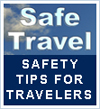FMCSA Administrator Hill Shares Safety Message From NASCAR’s Rusty Wallace
This year, Rusty Wallace has been helping us get the word to commercial motor vehicle drivers on the lifesaving importance of wearing safety belts. A poster and a TV and radio announcement can be downloaded here.
I have asked Rusty to contribute a message specifically for “The Fastlane.” Here’s Rusty in his own words:
Hi everyone, NASCAR Champion Rusty Wallace here, reminding you to always be ready and be buckled.
Buckling your safety belt only takes a few seconds, but it can save lives and prevent life-changing injuries to you, to your loved ones and to others.
Trust me, I know this first hand. After flipping down the backstretch at Daytona over 20 times in 1993 and then over 30 times at Talladega the same season, there is no way that I’d be alive to write this today if I didn’t make it a point to buckle up each and every time I get into a vehicle.
Like many of you, our race car transporter drivers are on the road for hundreds of thousands of miles each year and we insist on them being buckled up every single time they get on the road. As professional drivers, they have to remember that their safety belt not only helps them during a crash, but helps them to avoid a crash, by keeping them in position, behind the wheel and in control.
Look, it’s pretty simple to me; if you don’t buckle up behind the wheel, you’re endangering both yourself and everyone around you. There‘s no reason not to wear your safety belt.
In 2006, 805 occupants of large trucks were killed in crashes. If you don’t wear your safety belt, you’re increasing your chances of becoming one of them, it’s that simple. It’s as black and white as this: if you don’t want to die, wear your safety belt. Period.
-Rusty




